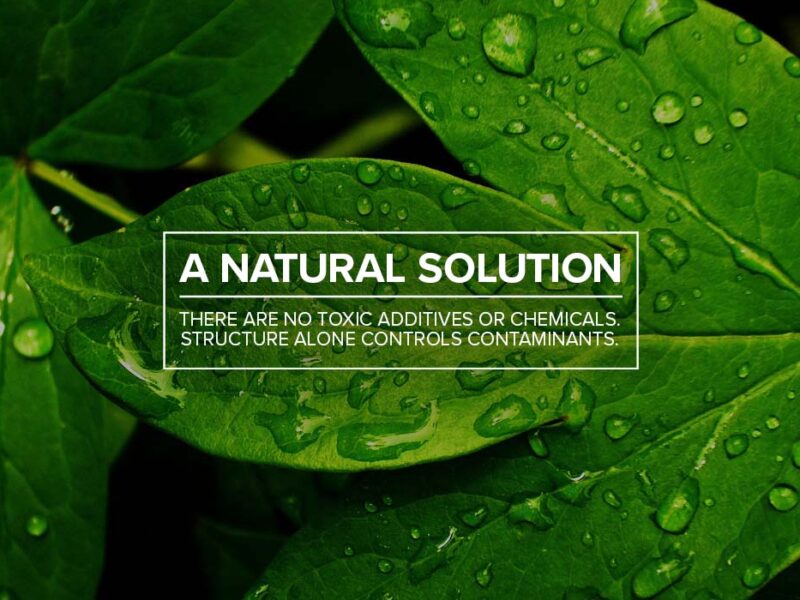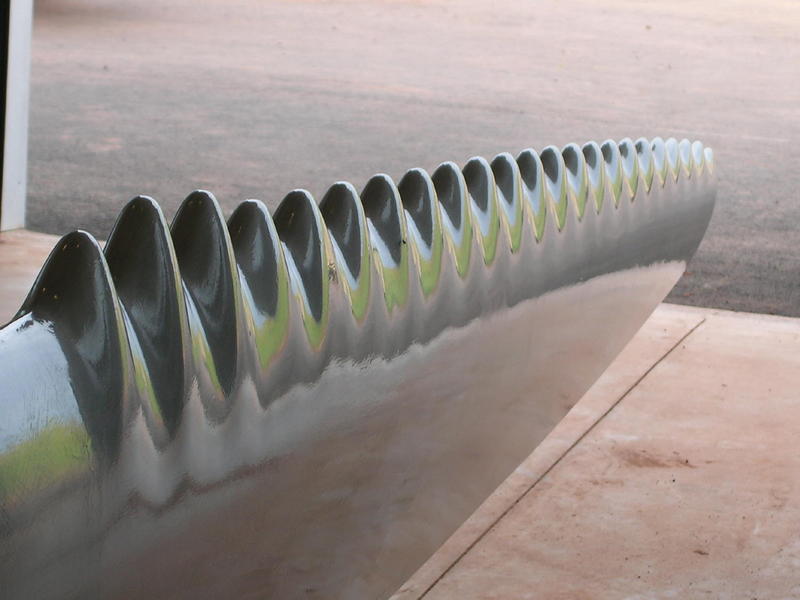While Sharklet holds great promise to improve the way humans co-exist with microorganisms, the pattern was developed far outside of a laboratory. In fact, Sharklet was discovered via a seemingly unrelated problem: how to keep algae from coating the hulls of submarines and ships. In 2002, Dr. Anthony Brennan, a materials science and engineering professor at the University of Florida, was visiting the U.S. naval base at Pearl Harbor in Oahu as part of Navy-sponsored research. The U.S. Office of Naval Research solicited Dr. Brennan to find new antifouling strategies to reduce use of toxic antifouling paints and trim costs associated with dry dock and drag.
Dr. Brennan was convinced that using an engineered topography could be a key to new antifouling technologies. Clarity struck as he and several colleagues watched an algae-coated nuclear submarine return to port. Dr. Brennan remarked that the submarine looked like a whale lumbering into the harbor. In turn, he asked which slow moving marine animals don’t foul. The only one? The shark.
Dr. Brennan was inspired to take an actual impression of shark skin, or more specifically, the dermal denticles. Examining the impression with scanning electron microscopy, Dr. Brennan confirmed his theory. Shark skin denticles are arranged in a distinct diamond pattern with tiny riblets. Dr. Brennan measured the ribs’ width-to-height ratios which corresponded to his mathematical model for roughness – one that would discourage microorganisms from settling. The first test of Sharklet yielded impressive results. Sharklet reduced green algae settlement by 85 percent compared to smooth surfaces.
While the U.S. Office of Naval Research continued to fund Dr. Brennan’s work for antifouling strategies, new applications for the pattern emerged. Brennan evaluated Sharklet’s ability to inhibit the growth of other microorganisms. Sharklet proved to be a mighty defense against bacteria.
Similar to algae, bacteria take root singly or in small groups with the intent to establish large colonies, or biofilms.
Similar to other organisms, bacteria seek the path of least energy resistance. Research results suggest that Sharklet keeps biofilms from forming because the pattern requires too much energy for bacteria to colonize. The consequence is that organisms find another place to grow or simply die from inability to signal to other bacteria.
Dr. Brennan’s and Sharklet Technologies’ research has demonstrated Sharklet’s success in inhibiting the growth of S. aureus, P. aeruginosa, VRE, E. coli, MRSA and other microbial species that cause illness and even death.
Sharklet Technologies is proud to produce products with the Sharklet pattern to help make the world a healthier, environmentally safer and better place. We’re equally honored to offer a biomimetic technology inspired by the shark which will allow humans and microorganisms to coexist in a sustainable and healthy way.





